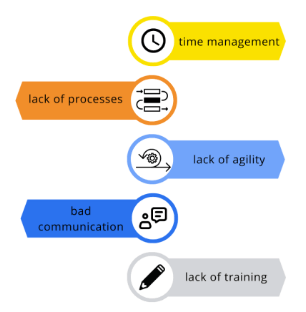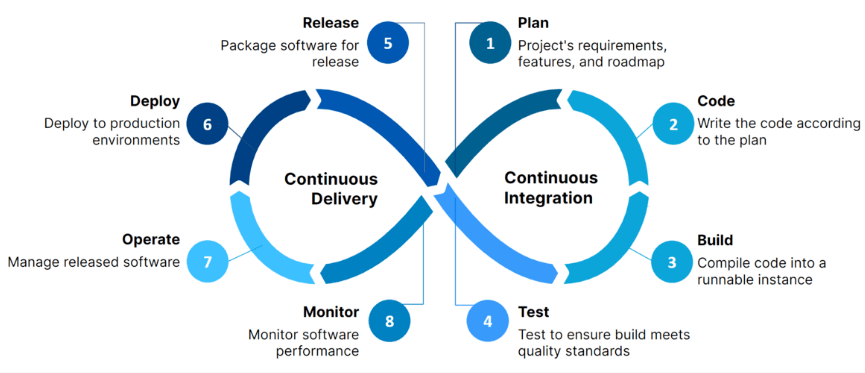
- Introduction to DevOps Adoption Challenges
- Resistance to Change in IT Teams
- Security and Compliance Concerns
- Challenges in Implementing CI/CD Pipelines
- Tool Overload and Wrong Tool Selection
- Budget and Resource Constraints
- Strategies to Drive DevOps Culture in Organizations
- Future Outlook for DevOps Adoption
Introduction to DevOps Adoption Challenges
DevOps, a set of practices that merges software development (Dev) and IT operations (Ops), focuses on shortening the development lifecycle, increasing deployment frequency, and enhancing software reliability. As more organizations adopt DevOps, the benefits of improved collaboration, faster delivery, and higher customer satisfaction are widely recognized. However, the journey to DevOps adoption is not without challenges. Organizations often face obstacles such as resistance to change, inadequate skills and training, lack of DevOps Training, misalignment between development and operations teams, and difficulties in integrating legacy systems with modern DevOps tools. These challenges can hinder the success of DevOps transformations and delay expected outcomes. In this article, we will examine the primary obstacles businesses encounter when implementing DevOps, how these issues affect overall success, and provide strategies to overcome them. Addressing these hurdles effectively is key to unlocking the full potential of DevOps and achieving sustained improvements in software development and delivery.
Interested in Obtaining Your DevOps Certificate? View The DevOps Online Course Offered By ACTE Right Now!
Resistance to Change in IT Teams
One of the most significant barriers to DevOps adoption is resistance to change within IT teams. IT departments, particularly those in large, established organizations, often follow traditional methods of software development and operations. Transitioning to a DevOps culture requires a fundamental shift in how teams collaborate and execute projects, which can cause anxiety and reluctance among team members. The fear of the unknown, concerns about job security, and a lack of understanding of the benefits in the context of Agile vs DevOps are common reasons for resistance. Additionally, long-standing processes and roles can make it difficult for employees to embrace new workflows and responsibilities. To overcome this challenge, organizations need to foster a culture of change management.

It’s essential to involve all stakeholders in the process early on, providing them with education and training on DevOps principles. Clear communication about the long-term benefits of DevOps, such as improved collaboration, efficiency, and job satisfaction, can also help alleviate concerns. Creating a supportive environment where employees are encouraged to adopt new ways of working can go a long way in reducing resistance. Collaboration tools can further enhance communication and improve workflow.
Security and Compliance Concerns
- As DevOps emphasizes speed and agility, security and compliance can sometimes take a back seat, often referred to as the “DevSecOps” challenge.
- Many organizations find it difficult to integrate security practices into their continuous integration and delivery pipelines without slowing down development.
- Moreover, industries with strict regulatory requirements face additional complexity when trying to balance rapid delivery with compliance. To address security and compliance concerns, it’s essential to shift left in the DevOps process.
- This means integrating security measures into the development process from the start, rather than adding them as an afterthought, which is a key focus of DevOps Training. Tools like automated security testing, vulnerability scanning, and compliance monitoring can be integrated into CI/CD pipelines.
- By embedding security into every stage of the software lifecycle, organizations can mitigate risks without sacrificing speed. Continuous monitoring throughout the software lifecycle is crucial for detecting and addressing security vulnerabilities and compliance issues in real-time.
- Collaboration between development, operations, and security teams is key, as security should be a shared responsibility. Automating compliance checks within CI/CD pipelines ensures that organizations stay compliant with industry standards, reducing manual effort.
- Security training and awareness for teams foster a security-first mindset, empowering them to identify and address issues early in the development process. By integrating these strategies, organizations can create a more secure and compliant DevOps environment without compromising on speed.
- Choosing the right set of tools is essential for a smooth DevOps implementation.
- The DevOps toolchain consists of a wide array of tools designed to support everything from version control to testing to deployment.
- However, with so many tools available, organizations often struggle with tool overload using too many tools or the wrong tools for the job.
- The wrong tools can lead to inefficiency, compatibility issues, and integration challenges, slowing down the adoption process and preventing teams from achieving the desired outcomes.
- To avoid tool overload, organizations should carefully evaluate the needs of their teams and select tools that align with their objectives.
- It’s important to standardize the toolset to avoid fragmentation and ensure that tools are compatible with one another, especially when comparing options like Ansible Vs Kubernetes.
- Regularly reviewing and updating the toolchain as the DevOps practices mature is also crucial to optimizing the workflow.
- Implementing DevOps practices often requires substantial initial investment, particularly in automation tools, training, and cloud infrastructure.
- Many organizations face budget constraints, especially if they are in the early stages of the transition or are working with limited resources.
- Furthermore, adopting DevOps may require changes to existing infrastructure, additional personnel, and expertise.
- For smaller companies or organizations with tight budgets, these resource requirements can present a significant hurdle.
- To address budget constraints, organizations can start by prioritizing smaller, incremental changes that deliver immediate value.
- Rather than making a large upfront investment, organizations can focus on open-source tools, leveraging cloud services with pay-as-you-go models, and scaling their adoption as resources allow, particularly when evaluating container orchestration solutions like Docker vs Kubernetes.
- It’s also important to measure ROI early on by tracking efficiency gains and cost savings from improved development and operational processes.
- To mitigate initial investment risks, organizations can begin with small pilot projects that focus on specific aspects of DevOps.
- These initial projects can help demonstrate the value of DevOps practices before scaling them across the entire organization.
- Instead of investing in entirely new solutions, companies can look for ways to enhance or integrate their existing tools to fit into a DevOps pipeline, reducing the need for additional spending.
- Investing in fostering collaboration and a DevOps mindset among teams can lead to significant improvements without a large financial outlay.
- By encouraging communication between development and operations teams, organizations can increase efficiency and reduce operational costs.
To Earn Your DevOps Certification, Gain Insights From Leading DevOps Experts And Advance Your Career With ACTE’s DevOps Online Course Today!
Challenges in Implementing CI/CD Pipelines
One of the core components of DevOps is the implementation of Continuous Integration (CI) and Continuous Delivery (CD) pipelines, which automate the process of testing, building, and deploying code. This automation accelerates software delivery and ensures more reliable releases. However, setting up an efficient and effective CI/CD pipeline can be challenging. Organizations often face issues like inadequate testing, configuration problems, poor integration between tools, and a lack of automation, all of which can hinder the success of the pipeline, highlighting the importance of understanding the DevOps Engineer Salary, Roles & Responsibilities. Without a well-established CI/CD pipeline, development teams may struggle to deliver frequent updates and new features quickly, slowing down overall productivity. To implement a successful CI/CD pipeline, it’s crucial for organizations to carefully select the right tools and ensure that the pipeline is automated and well-integrated with existing systems.

Continuous monitoring and testing should be built into the pipeline to detect issues early and prevent bottlenecks. Moreover, organizations should prioritize incremental changes, iterating on the pipeline over time, instead of attempting to build the entire system all at once. This approach helps maintain flexibility and adapt to evolving needs.
Tool Overload and Wrong Tool Selection
Are You Considering Pursuing a DevOps Master’s Degree? Enroll For DevOps Masters Course Today!
Budget and Resource Constraints
Strategies to Drive DevOps Culture in Organizations
Building a successful DevOps culture goes beyond simply implementing tools and processes; it requires a fundamental shift in mindset and organizational behavior. A strong DevOps culture fosters collaboration, transparency, and continuous improvement across teams. Leadership support is critical; senior leaders must champion the DevOps transformation and lead by example, reinforcing its importance throughout the organization. Breaking down silos between development and operations teams helps improve communication and fosters a shared sense of responsibility. Continuous learning should be encouraged through ongoing training, experimentation, and knowledge sharing, allowing teams to grow and adapt to new technologies and practices such as understanding How To Install Jenkins on Ubuntu. Automation plays a key role in streamlining workflows and reducing human error by replacing manual tasks with efficient, repeatable processes. Lastly, regularly measuring progress using key metrics enables teams to track performance, identify areas for improvement, and refine the DevOps process over time. Together, these elements help cultivate a resilient, adaptable DevOps culture that supports long-term success.
Go Through These DevOps Interview Questions & Answer to Excel in Your Upcoming Interview.
Future Outlook for DevOps Adoption
The future of DevOps is bright, with its adoption steadily increasing across various industries as organizations recognize the significant benefits it offers. Faster development cycles, improved collaboration between teams, and enhanced software quality have positioned DevOps as a vital strategy in modern software delivery. As technology advances, emerging trends like artificial intelligence, machine learning, serverless computing, and edge computing are set to reshape and expand DevOps practices. These innovations, supported by DevOps Training, will empower teams to deliver more intelligent, scalable, and efficient solutions at an even faster pace. Organizations that continue to invest in DevOps and adapt to its evolving nature will gain a competitive edge through greater agility and responsiveness to market demands. While challenges in adoption still exist, businesses that overcome these hurdles will unlock new levels of innovation and operational excellence. DevOps has moved beyond being just a trend; it has become an essential part of the digital transformation journey. As the digital landscape grows more complex, DevOps will play an increasingly critical role in enabling seamless, secure, and rapid software delivery across the enterprise.




